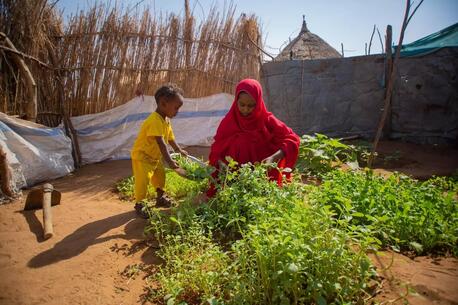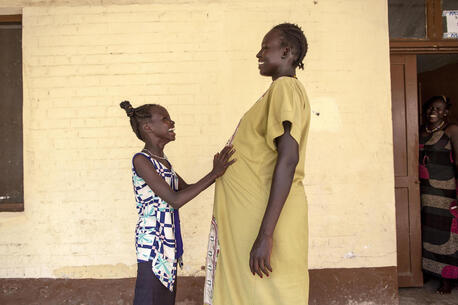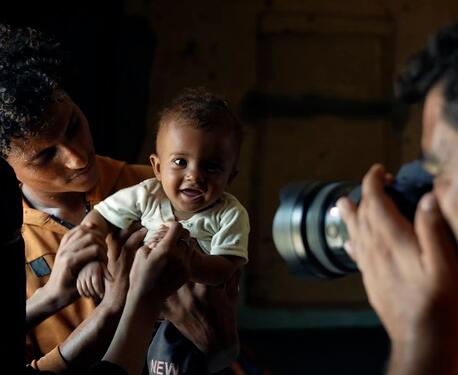NewsNet: Child mortality drops again
Around this time last year, we at the U.S. Fund were all thrilled to hear some remarkable news.
UNICEF had announced that the number of children dying each year before age five had fallen to 9.7 million"a record low. It was a heartening development and a momentous milestone.
Well, earlier this month, we got some more great news. The number of annual under-five deaths has dropped again to anther new low"9.2 million per year. That's a decline of 27 percent since 1990 and of more than 60 percent since 1960"and it shows that UNICEF's child survival strategy is working.
But we can't stop now. It is absolutely unacceptable that 9.2 million children still die needlessly"for want of a five-cent tetanus vaccine, for instance, or the lack of clean water. Emboldened by these declines, everyone here at the U.S. Fund is committed to helping UNICEF make sure this number keeps dropping"until the number of children dying from preventable causes is zero.
Around this time last year, we at the U.S. Fund were all thrilled to hear some remarkable news.
UNICEF had announced that the number of children dying each year before age five had fallen to 9.7 million"a record low. It was a heartening development and a momentous milestone.
[[{"type":"media","view_mode":"media_large","fid":"378","attributes":{"class":"media-image","typeof":"foaf:Image","height":"344","width":"425","style":""}}]]
Well, earlier this month, we got some more great news. The number of annual under-five deaths has dropped again to anther new low"9.2 million per year. That's a decline of 27 percent since 1990 and of more than 60 percent since 1960"and it shows that UNICEF's child survival strategy is working.
But we can't stop now. It is absolutely unacceptable that 9.2 million children still die needlessly"for want of a five-cent tetanus vaccine, for instance, or the lack of clean water. Emboldened by these declines, everyone here at the U.S. Fund is committed to helping UNICEF make sure this number keeps dropping"until the number of children dying from preventable causes is zero.
Around this time last year, we at the U.S. Fund were all thrilled to hear some remarkable news.
UNICEF had announced that the number of children dying each year before age five had fallen to 9.7 million"a record low. It was a heartening development and a momentous milestone.
Well, earlier this month, we got some more great news. The number of annual under-five deaths has dropped again to anther new low"9.2 million per year. That's a decline of 27 percent since 1990 and of more than 60 percent since 1960"and it shows that UNICEF's child survival strategy is working.
[[{"type":"media","view_mode":"media_large","fid":"378","attributes":{"class":"media-image","typeof":"foaf:Image","height":"344","width":"425","style":""}}]]
But we can't stop now. It is absolutely unacceptable that 9.2 million children still die needlessly every year"that's still some 25,000 preventable deaths every day"for want of a five-cent tetanus vaccine or the lack of clean water. Emboldened by these declines, everyone here at the U.S. Fund is committed to helping UNICEF make sure this figure keeps dropping"until the number of children dying from preventable causes is zero.
UNICEF's announcement garnered moderate news coverage, but nowhere near the amount it deserved. Several U.S. newspapers ran only briefs. This may have been the result, in part, of a news cycle dominated by the American Presidential election and the financial crisis.
Read these relatively in-depth reports on the child mortality numbers from CBS, Reuters and Voice of America.
BACKGROUND NOTE:
When it comes to child mortality rates, a yawning discrepancy exists between developing and industrialized countries. Worldwide, there were 68 deaths per 1,000 live births in 2007. In industrialized countries, the rate was only six deaths for every 1,000 births.
Malnutrition plays a role in more than a third of all under-five deaths. There are an estimated 148 million children in the developing world who remain undernourished.
A number of countries have made significant progress in cutting child mortality. The Lao People's Democratic Republic, Bangladesh, Bolivia and Nepal all reduced their under-five mortality rates by more than 50 percent since 1990. Eritrea cut its child death rate by 52 percent during that same period. And Malawi, Mozambique, Niger and Ethiopia cut theirs by more than 40 percent.
Africa still has stubbornly high child mortality. In Sierra Leone, which has the highest child death rate in the world, 262 out of 1,000 children die before their fifth birthday.
Have you followed the news on declining child mortality? Will you commit to helping UNICEF reach a day when zero children die of preventable causes?


